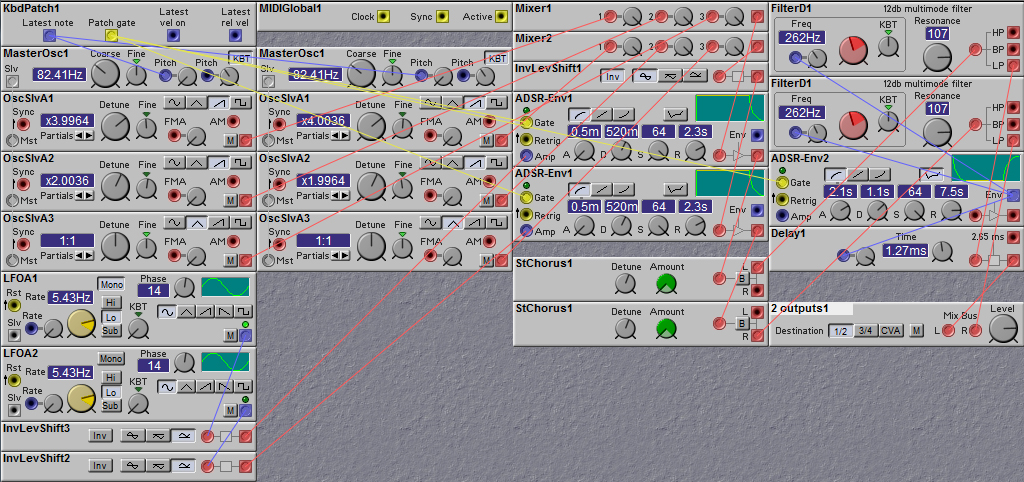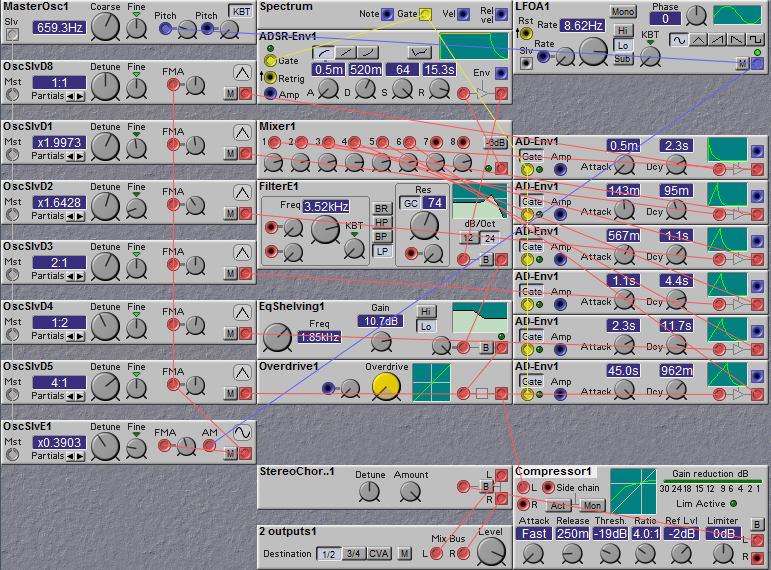Feb 05 2022
New Collaborative Acoustic Ambient Album: Raw Materials
After completing Songs of Intuition and Ignorance in July of 2021, I wanted to do something completely different. Songs was primarily a solitary process, with the exception of significant contributions by Kenny Blacklock on Particle Accelerator. I was working alone, stuck with my own habits and inclinations, necessitated by the global pandemic that raged on. I’ve always been interested in abstraction, and I pushed myself to write lyrics that were both abstract and evocative.
For my next project, I wanted to do something more expansive, less inward-looking. I wanted to create a kind of wordless sonic beauty I’d find comforting. To that end, I decided to collaborate more significantly. I knew many artists who were wood-shedding and recording at home. I began to compile a list of my ‘dream team,’ artists who are both adventurous and excellent. The plan was to request an unprocessed improvisation of an acoustic instrument in the key of Fm. These recordings would then become the raw materials for an ambient composition.
The previously-mentioned Kenny Blacklock was first because we’d worked together on a number of projects, and he’s almost always up for anything. He’s a part of the Northern California music scene, primarily known as a fiddler, but he’s a composer, producer, educator, and experimenter. He delivered several tracks of violin and, listening to them, I was enraptured. (This happened again and again, as more and more tracks came in.)
Next was flute. I’d originally asked my long-time Norwegian friend Ketil Vestrum Einarsen, who’s played or led some of my favorite bands. Sadly, he was unable to participate. Next, Emily Hay, who was an important part of the Los Angeles avant garde scene in the 80s, playing in U-Totem and Motor Totemist Guild. Since then, she’s had a long and storied career as an improviser, vocalist, and good egg. I’d been a stupid fan-boy of hers for years, and she was super gracious when I asked her but, sadly, she was unable to participate either. Finally, I remembered Ellen Burr. She’d worked with several people I know, both as an improviser but, also, with deep roots in classical and modern composed music. Her CV is insane. I reached out, explained what I was doing, and she agreed. The track she delivered was gorgeous, and I listened to it obsessively.
I’d met Jeff Kaiser at a looping festival in Long Beach. I remember watching him at that performance, operating software he’d written himself that made his trumpet bounce around the room doing somersaults and jumping jacks. At that time he was teaching in San Diego but, subsequently, relocated to the University of Central Missouri, where he runs a fantastic music technology program. Dr Kaiser has worked with jazz and avant garde luminaries in the LA music scene, has written scholarly texts, operated a record label, and didn’t laugh at me when I asked him for a track. He delivered an improvisation on flugelhorn. Again, I sat and listened to his recording repeatedly, and I remember the feeling of holding my breath in reverence.
I knew I wanted acoustic guitar, and guitarists are everywhere, but it didn’t take me long to realize that Angelo Metz was my first choice. I’ve seen him perform in countless different contexts, playing acoustic and electric guitar. He’s probably best known for playing Brazilian music, but he’s a classically trained artist who has complete command of his instruments. Plus, he’s an electronic music experimenter. Dr Metz was gracious and submitted a recording that, again, became an endless loop in my headphones.
Several years ago I’d become enamored of Scandinavian progressive rock, and was subsequently afforded the opportunity to interview a number of important artists. Strangely, many of the projects I most loved were, in some way, connected to Mattias Olsson. Olsson is perhaps best known as the drummer of Änglagård, but he he is constantly busy recording and producing a steady flow of great artists, working on his own projects, and playing on countless others. His Roth-händle studio is packed with all sorts of instruments but, in the hope he’d say ‘yes,’ I asked for glockenspiel, which is fairly easy to set up. He came through with a gorgeous track.
I knew I wanted bass, and Tom Peters is a local musician who performs with the Long Beach Symphony Orchestra, and is on the faculty of the Bob Cole Conservatory. He’s also a wonderful composer, creating scores for silent films. He’s a live looper, too. His achingly beautiful album, Lamentations, absolutely captivated me. When I asked if he’d participate, he was amazingly gracious, and sent me four (4) different tracks. These tracks ended up opening and closing Part 1, and breathed a kind of magical intensity into the work.
I didn’t really know Katie Porter, but she’d been working with some people I know, and I’d been following her career with some interest. She’s a clarinetist, but specializes in bass clarinet, and seems to focus primarily on new music, improvisation, and experimental performance. I’d noticed that she had been in Germany for a concert series, and returned for a festival in the desert, so I just sent her a Facebook message out of the blue, explaining who I was and what I was doing. She had been booked for a recording session, and graciously provided me with a beautiful track, which ended up being really important to the culmination of all three parts.
Gigi ‘Gee’ Rabe is known as “LA’s Accordion Diva,” and that’s fantastic. She’s a graduate of CSULB’s music program, and plays absolutely every musical style. I’ve heard her play Klezmer, folk, rock, jazz, and classical pieces. She’s not, however, an experimental artist. I met her, briefly, way back in the 80s, and have been a fan ever since. Like so many musicians, she’d been cut off from her performance work due to the pandemic. When I asked her to participate, I got the feeling that she didn’t quite ‘get’ what I was doing, but she recorded an improvisation that, upon first listen, sent goosebumps up and down my whole body. The track starts out somewhat playfully but, tentatively, it works its way into a really beautiful and tender place, which I used several times in all three parts. It and Kenny’s violin form a lovely duet.
I met Charles Sharp in the mid 90s, when he and I both worked at the local jazz radio station on campus, KLON (now KKJZ 88.1). Even then his knowledge of music, all music, was shockingly encyclopedic, but he had a special interest in avant garde American music. Now, he co-hosts a KXLU program focused on improvised music, and is on the faculty of CSU Fullerton. Dr Sharp, like Dr Kaiser, is known for extended instrumental techniques. Like Tom, he frequently performed live scores for silent movies, as part of the Jack Curtis Dubowsky Ensemble. He graciously agreed to record an improvisation with alto saxophone, which was both beautiful and interesting.
I had the good fortune to meet Daniel Smith in 2016, when he was first launching The Infinite Stage, which presents “innovative and experimental classical music experiences.” Dr Smith is a masterful cellist, deeply rooted in composed music from many periods. With the violin and bass in hand, I knew that I wanted cello to complete the string section. I explained what I was looking for and, using his cel phone, recorded some really lovely passages.
Once I had all the raw materials in hand, I loaded them all into my computer and began chopping them up into chunks. This was partly because some phrases didn’t fit the key, and partly to focus on passages that felt really strong to me. I intentionally did not listen to multiple instruments simultaneously. I had a reference ‘chord’ that played as I made the cuts. Once I had all the segments, some a single note and some quite long, I loaded them all onto my 2017 iPad Pro. I’ve been using this iPad for live performance since 2017, and decided that the tools available to me on that platform would help me to craft interesting and beautiful sonic transformations. I used a series of processes, including time-stretching, granular synthesis, modulation and delay effects to create the pieces that would end up in part one. I wanted to create abstractions that were not identifiable as the instruments used to create the sounds, but still have their sonic DNA. Once I’d processed all the parts, I began to assemble them into Part 1.
As I said, I was really enamored of the raw materials I was given. I wanted to create a piece that would showcase the artistry of the musicians, and the beautiful sounds of their instruments. Using the chopped up bits, I assembled Part 3, adding just a bit of delay and reverb.
For Part 2, I took Part 3, which was just under 2 minutes long, and time-stretched it to just over 20 minutes. I added a bit of delay and reverb but, other than that, it really is the same as Part 3, but much, much, much slower.
I was deeply moved by the generosity of the participating artists, and how graciously they gave of their talent and artistry, not knowing at all what the end result would be. We stepped off the precipice together, virtually, and I am eternally grateful for their courage and kindness.













